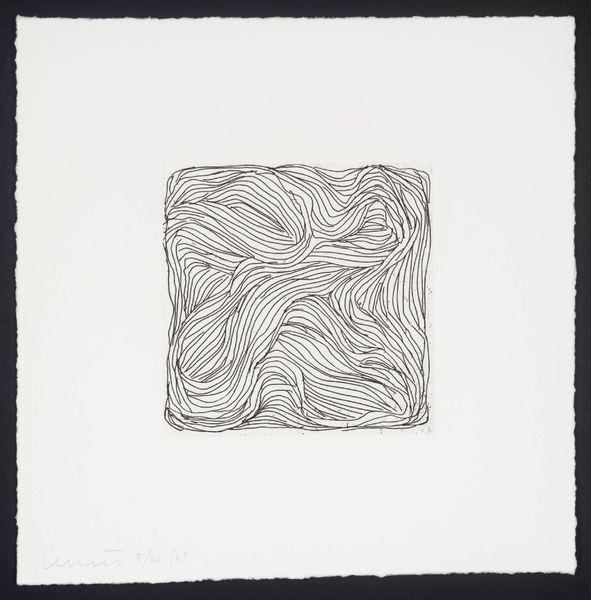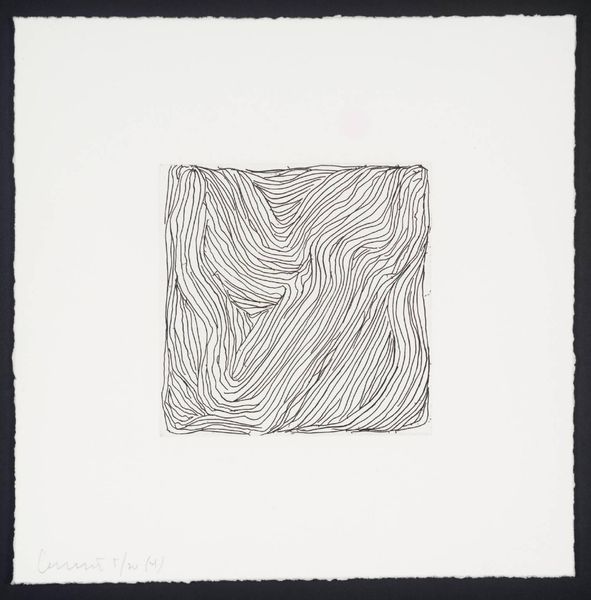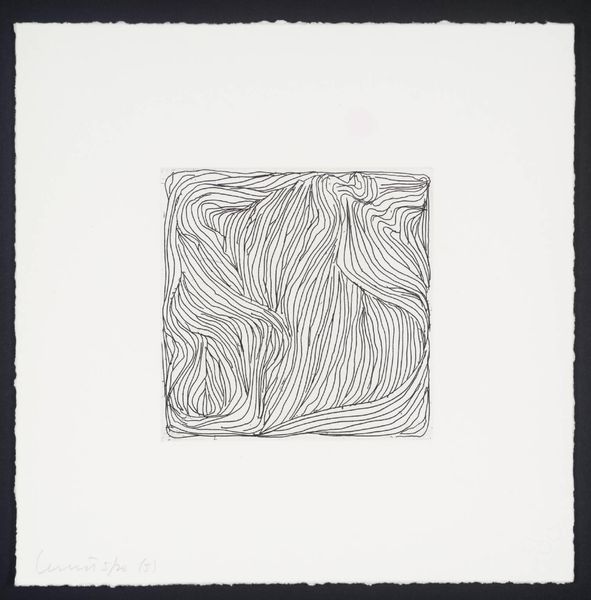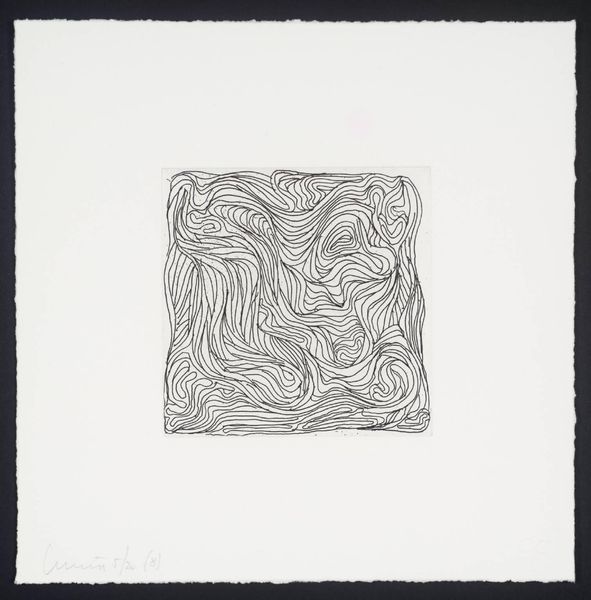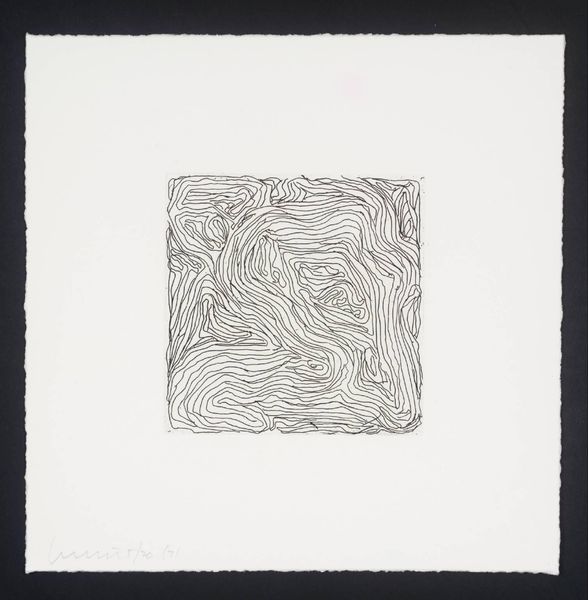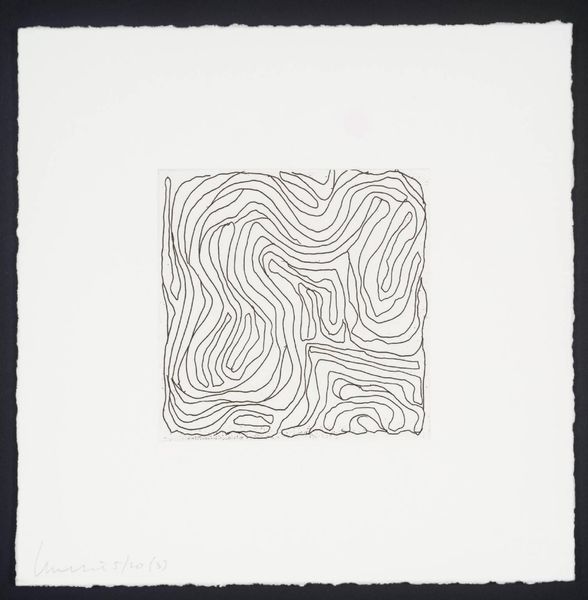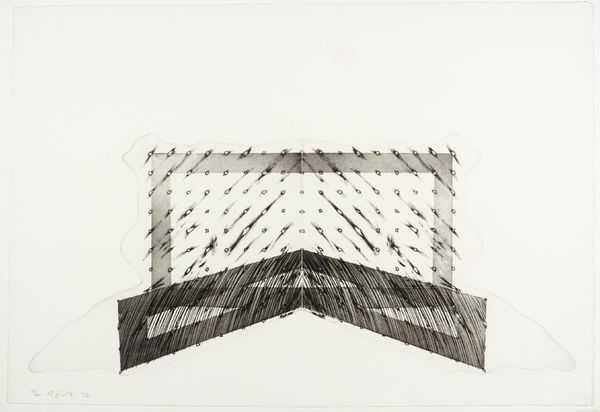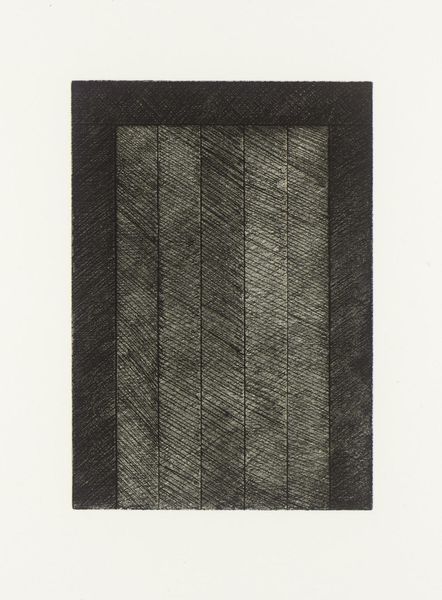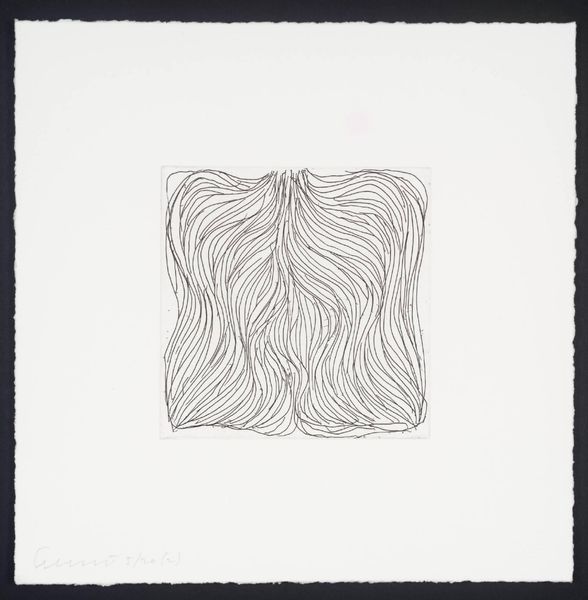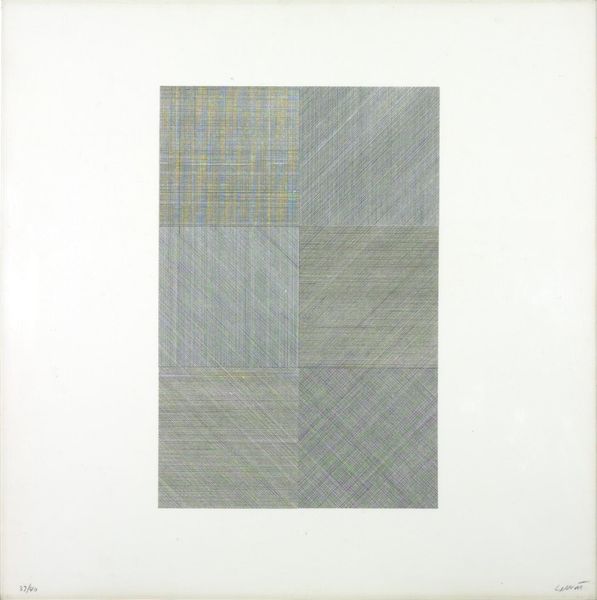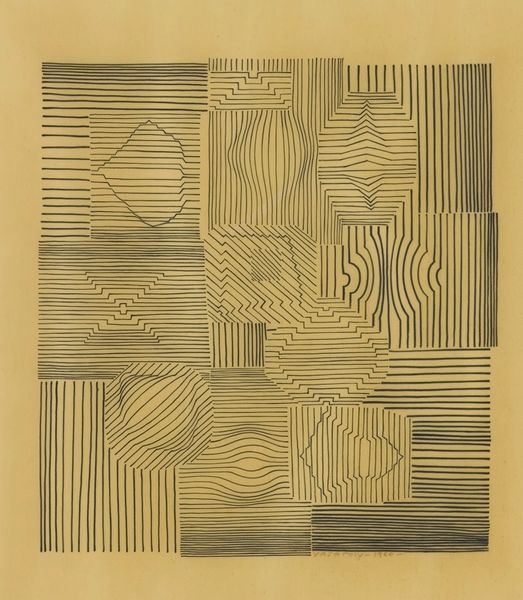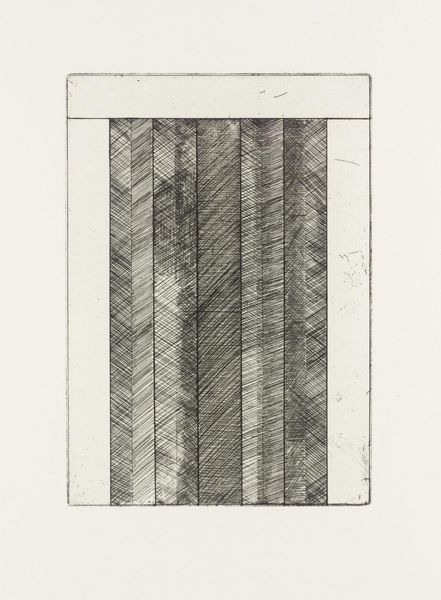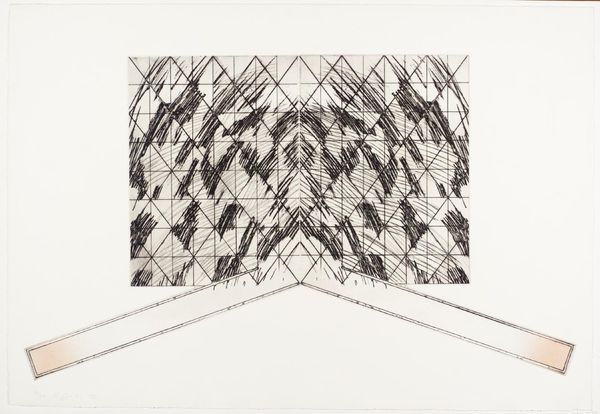
Dimensions: image: 100 x 100 mm support: 210 x 210 mm
Copyright: © The estate of Sol LeWitt | CC-BY-NC-ND 4.0 DEED, Photo: Tate
Curator: Here we have Sol LeWitt’s "Small Etching/Black & White No.1," held in the Tate Collections. It measures a modest 100 by 100 millimeters. Editor: Minimalist, yes, but something about the intersecting lines feels ancient, almost like runes on a tablet. Curator: LeWitt was fascinated with the process of making art and considered himself a conceptualist. This work removes the artist's hand, emphasizing the system. Each quadrant uses only straight lines to create unique textures. Editor: It’s interesting that you call it "removing the hand" when the slight imperfections in the etching give it such a human feel. Each mark feels like a tiny gesture, a coded message from the artist. Curator: Perhaps, but ultimately the meaning is derived from the work itself, its production, and its place within a larger system of art making. Editor: Still, I can’t shake the feeling that these lines are more than just lines. The careful arrangement evokes a deep sense of order, maybe even a connection to some forgotten alphabet. Curator: I think we've both found something compelling in this modest piece, haven't we? Editor: Indeed. It reveals how much we can read into something so simple.
Comments
tate 8 months ago
⋮
http://www.tate.org.uk/art/artworks/lewitt-small-etchingblack-white-no1-p78435
Join the conversation
Join millions of artists and users on Artera today and experience the ultimate creative platform.
tate 8 months ago
⋮
Small Etchings/Black & White is a series of eight etchings consisting of small square-shaped spaces, depressions in the centre of the paper, filled with fine black lines. Numbered one to eight and intended to be displayed in this order, they apparently describe a progression. Serial accumulation following a clearly observable 'logic' is one of the central tropes of LeWitt's drawings and prints, as in, for example, his Composite Series (set of five, black/white) 1971 (Tate P07061-5). However the logic of progression in this later series of Small Etchings is not immediately evident. Also atypical to LeWitt's work (prior to the late 1990s) are the complex organic formations created by the drawn lines. Typically, he uses variations of what he describes (in his titles) as 'straight' and 'not straight' lines and evenly delineated 'arcs'. In the Small Etchings he progresses from the geometric to undulating lines in variations and combinations of two types: groups of nearly parallel lines like the striations of muscle tissue and meandering lines which accumulate to evoke the contours of a topographical relief map. No.1 is the configuration of straight parallel lines (horizontal, vertical and diagonal), initially appearing in LeWitt's drawings in 1965, which constitutes the starting point for virtually all his subsequent variations of lines both in black and white and in colour. The lines have been drawn by hand, without a ruler, and are therefore more uneven than they usually are in his pen and ink and wall drawings. This unevenness provides the basis for the subsequent progression. No.2 is an immediate departure into the organic. Its lines begin in a cluster at the centre top of the area and fan downwards and outwards to fill the square. In No.3 the nearly continuous line follows a labyrinthine journey. It meanders and folds back on itself to create a looping pattern. No.4 consists of dense areas of parallel lines filling in spaces between more widely curving lines. No.5 is a slightly more curvaceous version of No.4 and No.6 is even more convoluted. No.7 is a return to the continuous meandering line of No.3, as opposed to the striations of Nos.4 to 6, but it is more densely packed and its lines waver slightly. No.8, in an apparent return to the logic of LeWitt's usual accumulative strategy, is a combination of the two types of line, resulting in a decorative textured area. Printmaking has been central to LeWitt's practice ever since he made his first print in 1970. In his famous self-defining Paragraphs on Conceptual Art (first printed in Artforum, June 1967) LeWitt laid out various means by which he aimed to avoid the subjective in his work. He wrote: When an artist uses a conceptual form of art, it means that all of the planning and decisions are made beforehand and the execution is a perfunctory affair. The idea becomes a machine that makes the art. This kind of art is not theoretical or illustrative of theories; it is intuitive, it is involved with all types of mental processes and it is purposeless … Conceptual art is not necessarily logical. The logic of a piece or series of pieces is a device that is used at times only to be ruined. Logic may be used to camouflage the real intent of the artist, to lull the viewer into the belief that he understands the work, or to infer a paradoxical situation (such as logic vs. illogic) … Ideas are discovered by intuition.(Quoted in Sol LeWitt, p.56.) Much of LeWitt's practice, such as wall drawings and screenprinting, may be executed by assistants following the artist's concept. Etching, like drawing on paper, requires the hand of the artist himself. The sequence of Small Etchings graphically illustrates the expressive potential of the artist's hand. LeWitt's tension between logic or structure and intuition is heightened by the tactile medium of etching, emphasising what he calls, in his Paragraphs, the 'expressive device' of 'physicality' as opposed to the cerebral 'idea'. As Lewison comments in his essay 'Sol LeWitt - Systems and Prints' (Sol LeWitt: Prints 1970-86, pp.9-15), these oppositions are analogous to the French theorist Roland Barthes's concept of the structure of language. In his Elements of Semiology (1964) Barthes breaks language down into two elements: the system (grammatical structure) of a language and its use in speech (instinctual and often illogical). LeWitt's two-dimensional series may be read as an elucidation of the language of line. Further reading:Sol LeWitt, exhibition catalogue, Haags Gemeentemuseum, The Hague 1970, pp.56-7Sol LeWitt: Prints 1970-86, exhibition catalogue, Tate Gallery 1986Sol LeWitt: a Retrospective, exhibition catalogue, Museum of Modern Art, San Francisco 2000 Elizabeth Manchester April 2002
